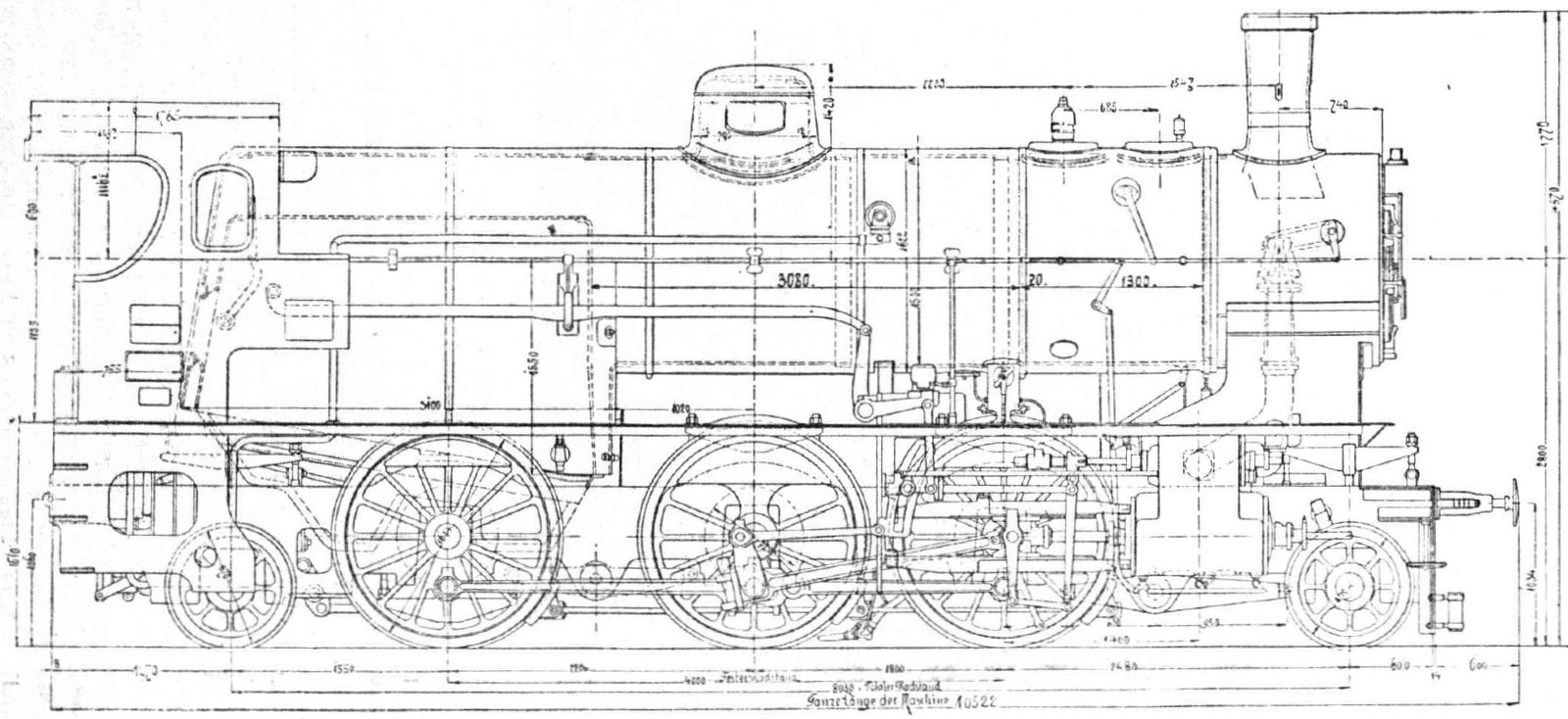The kkStB network included many routes on which both passenger and express trains could not travel faster than 70 or 75 km/h due to the topographical conditions. When the four-coupled engines were no longer sufficient for these services, it was necessary to switch to a six-coupled engine. At that time, the 4-6-0 wheel arrangement was popular in other countries, but it didn't offer much space for a large firebox between the coupled wheels. Since a trailing axle was needed due to the low-energy coal in Austria, the class 110 for faster trains had been introduced as early as 1905 with a 2-6-2 wheel arrangement. So Gölsdorf also developed the class 329 with this wheel arrangement, but a driver diameter of only 1,614 mm.
The running gear was taken over almost unchanged from the tank locomotive of the class 229. This had a two-cylinder compound engine and had already been introduced in 1904 for passenger trains. Since the water and coal reserves on the locomotive were no longer available, a significantly larger boiler could be used. This was placed high in order to be able to arrange an even larger firebox above the last coupled axle and the trailing axle. Instead of a Schmidt superheater, a Clench-Gölsdorf type steam dryer was used.

Schematic drawing with dimensions
Die Lokomotive, June 1907
The kkStB had 93 pieces built, which came from all the important factories in Austria. Although they reached up to 110 km/h in test drives, they were approved for 80 km/h. A speed of between 42 and 45 km/h was reached with a train load of 313 tonnes on a one percent steep, winding incline, which corresponds to an output of 950 to 1,000 hp. Alternatively, express freight trains of up to 750 tons and conventional freight trains of up to 1,150 tonnes could be transported on gentle gradients.
In addition to the kkStB, the k.u.k. Military railway Banjaluka-Dobrlin bought two pieces and the MÁV a total of 65 pieces. Although MÁV had its own factory, all engines were built in the same factories that kkStB engines came from. The Hungarian engines had the Westinghouse air brakes, while the Austrian had a vacuum brake.
After the First World War only 20 locomotives ended up with the BBÖ. The PKP had received 21 pieces and called them Ol11. After the Second World War, the PKP received another 14 of the BBÖ locomotives, which the Reichsbahn had relocated to Kraków as class 351 and were therefore in Poland after the end of the war. A total of 38 units came to Czechoslovakia to the CSD, which classified them as class 354.1. They were gradually all converted into superheated steam simples and were also given electric lighting and air brakes. The last of them were in service until 1968.